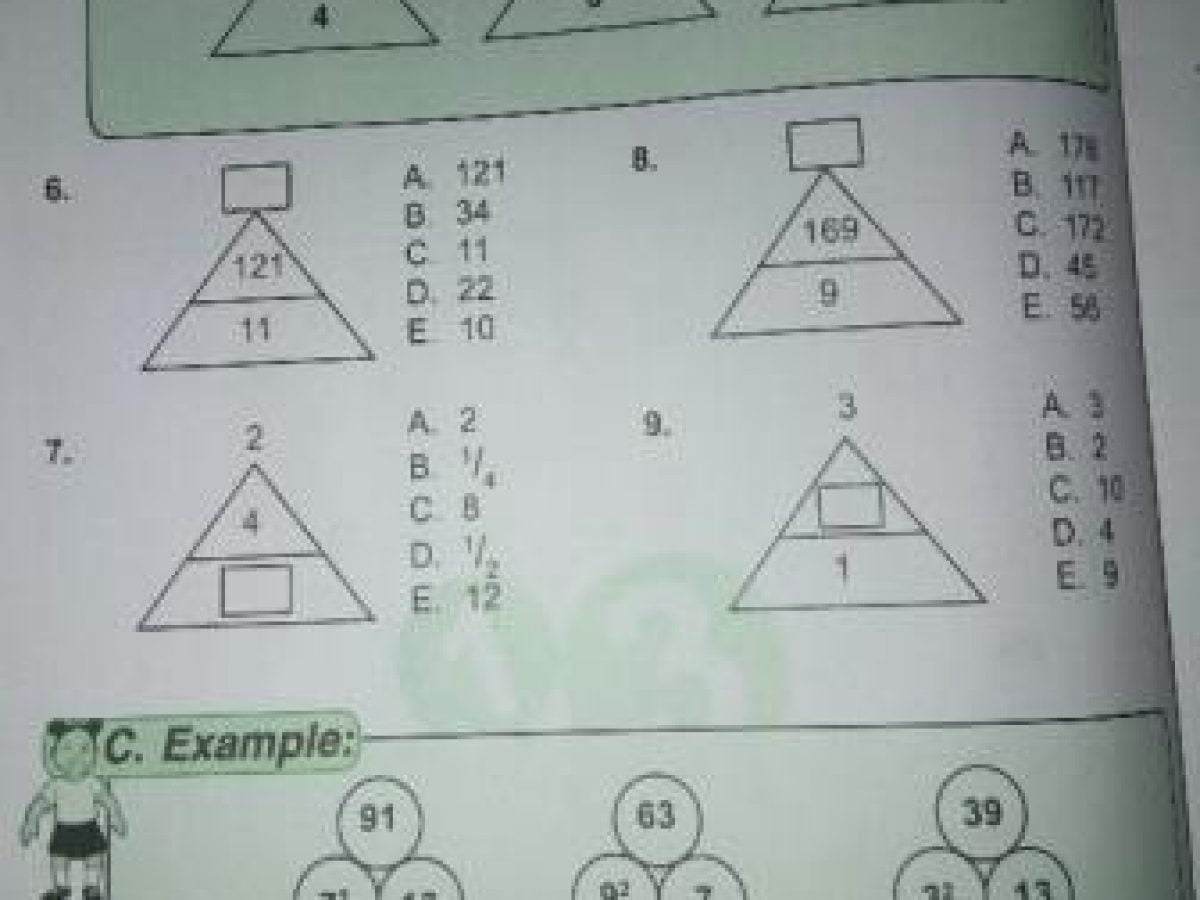How to Solve Quantitative Reasoning for Primary Schools
Advertisements
Introduction
Quantitative reasoning is a fundamental skill that plays a crucial role in the academic and real-world success of primary school students. It encompasses the ability to understand, analyze, and solve mathematical problems in a logical and systematic manner. By developing strong quantitative reasoning skills, students gain the tools to navigate mathematical challenges and apply their knowledge to practical situations.
Advertisements
In this article, we will explore effective strategies and techniques to help primary school students enhance their quantitative reasoning abilities. By providing a solid foundation, engaging learning methods, and fostering critical thinking, we can support students in becoming confident problem solvers. So let’s delve into the world of quantitative reasoning and discover how we can guide our young learners toward mathematical proficiency.
Understanding the Basics of Quantitative Reasoning
Before we dive into the strategies, it’s important to establish a clear understanding of what quantitative reasoning entails. At its core, quantitative reasoning involves the ability to interpret and manipulate numerical data, make connections between mathematical concepts, and solve problems using mathematical operations.
In the context of primary school education, quantitative reasoning encompasses various fundamental skills, including number sense, counting, basic operations, measurement, and data interpretation. These skills serve as building blocks for more complex mathematical concepts that students will encounter as they progress through their education.
By developing a strong foundation in these basics, students gain the confidence and skills necessary to tackle more advanced quantitative reasoning tasks. It is crucial to ensure that students grasp the underlying concepts and are comfortable applying them in different contexts.
Developing a Strong Foundation
To effectively solve quantitative reasoning problems, students must first have a solid foundation in basic math concepts. Number sense, which refers to a deep understanding of numbers and their relationships, forms the bedrock for quantitative reasoning. It involves recognizing patterns, estimating quantities, and understanding numerical operations.
In the early years of primary school, students should engage in activities that promote number sense, such as counting objects, comparing quantities, and identifying number patterns. These activities lay the groundwork for more complex quantitative reasoning skills.
Additionally, basic operations like addition, subtraction, multiplication, and division are fundamental to quantitative reasoning. Students should become fluent in these operations and understand how they relate to one another. Providing ample opportunities for practice, both in class and at home, can strengthen their grasp of these foundational skills.
By focusing on building a strong foundation in number sense and basic operations, teachers and parents can set students on a path toward success in quantitative reasoning. These skills will serve as the building blocks for more advanced problem-solving strategies.
Problem-Solving Strategies
Problem-solving lies at the heart of quantitative reasoning. To excel in this area, students need effective strategies to approach and solve mathematical problems. By teaching them practical problem-solving techniques, we can empower them to tackle quantitative reasoning challenges with confidence. Here are some strategies to consider:
- Understand the Problem: Encourage students to carefully read and understand the problem before attempting to solve it. Highlight the important information and identify what needs to be found or calculated.
- Visualize the Problem: Visual aids can be powerful tools in quantitative reasoning. Encourage students to draw diagrams, use graphs or charts, and create models to represent the problem visually. This helps them visualize the given information and establish a clearer understanding of the problem.
- Break Down the Problem: Complex problems can be overwhelming, especially for young learners. Teach students to break down the problem into smaller, more manageable parts. They can solve each part individually and then combine the solutions to arrive at the final answer.
- Work Systematically: Encourage students to follow a step-by-step approach when solving problems. Emphasize the importance of showing their work and organizing their calculations neatly. This not only helps them avoid errors but also allows for easier tracking of their problem-solving process.
- Use Trial and Error: In some situations, trial and error can be an effective problem-solving strategy. Encourage students to make educated guesses and test different possibilities. While this approach may not always yield the correct answer, it fosters critical thinking and perseverance.
By teaching students these problem-solving strategies, we equip them with the tools they need to approach quantitative reasoning tasks with confidence and efficiency. These strategies promote logical thinking, analysis, and perseverance, all of which are essential in solving complex mathematical problems.
Building Critical Thinking Skills
Quantitative reasoning goes beyond mere calculations. It involves developing critical thinking skills that enable students to analyze problems, make connections, and evaluate solutions. By nurturing critical thinking, we empower students to think critically about mathematical concepts and apply them in various contexts. Here are some ways to foster critical thinking skills:
- Ask Thought-Provoking Questions: Encourage students to ask questions that prompt deeper thinking. Instead of providing direct answers, guide them to explore different approaches, consider alternatives, and justify their reasoning.
- Provide Open-Ended Problems: Open-ended problems challenge students to think creatively and come up with multiple solutions. These types of problems require students to analyze the given information, make connections, and think outside the box.
- Promote Discussion and Collaboration: Engage students in discussions that encourage them to articulate their thought processes. Collaborative problem-solving activities allow them to learn from one another, share different perspectives, and develop a deeper understanding of quantitative reasoning concepts.
- Integrate Real-World Contexts: Connect quantitative reasoning to real-life situations to make it more meaningful for students. Show them how mathematics is applied in everyday scenarios, such as budgeting, measurements, or data analysis. This helps students see the practical relevance of quantitative reasoning.
By integrating these strategies into teaching practices, educators can foster critical thinking skills in students, enabling them to approach quantitative reasoning challenges with a higher level of analysis, evaluation, and creativity.
Utilizing Technology in Quantitative Reasoning Education
In today’s digital age, technology plays a significant role in education, including quantitative reasoning instruction. Integrating technology into the learning process can enhance student engagement, provide interactive experiences, and offer opportunities for personalized learning. Here are some ways to leverage technology in quantitative reasoning education:
- Educational Apps and Games: There is a wide range of educational apps and games available that specifically target quantitative reasoning skills. These interactive tools provide engaging activities and practice exercises that reinforce mathematical concepts in a fun and interactive manner.
- Online Resources and Tutorials: Online platforms offer a wealth of resources, tutorials, and videos that can supplement classroom instruction. Students can access these resources to review concepts, practice problem-solving, and gain a deeper understanding of quantitative reasoning.
- Virtual Manipulatives: Virtual manipulatives are digital representations of physical objects that aid in understanding mathematical concepts. They allow students to manipulate objects, visualize mathematical relationships, and explore mathematical concepts in a dynamic and interactive way.
- Data Analysis Tools: Introduce students to data analysis tools that enable them to collect, organize, and analyze data sets. These tools provide a hands-on experience in working with real data, helping students develop data interpretation and analytical skills.
- Online Collaborative Platforms: Online collaborative platforms enable students to engage in collaborative problem-solving activities with their peers. These platforms facilitate communication, idea sharing, and joint problem-solving, promoting teamwork and critical thinking.
When incorporating technology into quantitative reasoning education, it is essential to strike a balance between screen time and hands-on experiences. Technology should serve as a supplement to classroom instruction, enhancing learning experiences and providing additional resources and opportunities for practice.
Cultivating a Growth Mindset
A growth mindset is a belief that intelligence and abilities can be developed through effort, practice, and persistence. By cultivating a growth mindset in students, we can foster resilience, motivation, and a willingness to tackle challenges in quantitative reasoning. Here are some strategies to promote a growth mindset:
- Encourage Effort and Perseverance: Emphasize the importance of effort and hard work in the learning process. Celebrate students’ progress and achievements, focusing on their dedication and perseverance rather than solely on the outcome.
- Provide Constructive Feedback: Offer specific and constructive feedback that highlights areas of improvement while acknowledging students’ strengths. Encourage them to learn from mistakes and view them as opportunities for growth.
- Set Realistic Goals: Help students set realistic, attainable goals in their quantitative reasoning journey. Break down larger goals into smaller, manageable steps, allowing them to track their progress and experience a sense of accomplishment along the way.
- Promote Self-Reflection: Encourage students to reflect on their learning experiences, identify strategies that work well for them, and consider areas for improvement. Foster a growth mindset by emphasizing that mistakes are valuable learning opportunities.
Engaging Parents and Guardians
The involvement of parents and guardians is crucial in supporting students’ quantitative reasoning development. By creating a strong home-school partnership, educators can reinforce quantitative reasoning skills beyond the classroom. Here are some strategies to engage parents and guardians:
- Communication: Maintain open lines of communication with parents and guardians to keep them informed about their child’s progress in quantitative reasoning. Provide regular updates, share resources, and offer suggestions for activities they can do at home to support their child’s learning.
- Workshops and Webinars: Conduct workshops or webinars for parents and guardians to educate them about the importance of quantitative reasoning and provide them with strategies to support their child’s learning. These sessions can include demonstrations, hands-on activities, and opportunities for discussion.
- Home Learning Resources: Share home learning resources, such as websites, apps, and books, that parents and guardians can use to reinforce quantitative reasoning skills. Provide clear instructions and suggestions for activities they can engage in with their child to practice mathematical concepts.
- Family Math Nights: Organize family math nights or events where parents and guardians can participate in math-related activities with their child. These events create a positive and supportive environment for students to showcase their quantitative reasoning skills and engage in fun math-related challenges.
- Collaborative Projects: Encourage collaborative projects that involve both students and their parents or guardians. These projects can provide an opportunity for families to work together, apply quantitative reasoning skills, and foster a sense of shared learning and accomplishment.
By actively involving parents and guardians in the quantitative reasoning journey, educators create a strong support system that reinforces learning both inside and outside the classroom. Collaborating with families empowers students and helps them see the practical application of quantitative reasoning in their daily lives.
Conclusion
Developing strong quantitative reasoning skills is essential for students’ academic success and their ability to navigate real-life situations. By implementing effective teaching strategies, fostering critical thinking skills, leveraging technology, cultivating a growth mindset, and engaging parents and guardians, educators can create an environment that nurtures students’ quantitative reasoning abilities.
Remember, quantitative reasoning is not just about calculations; it is about problem-solving, logical thinking, and applying mathematical concepts in various contexts. By equipping students with these skills, we prepare them for a future where quantitative reasoning plays a vital role in decision-making, problem-solving, and understanding the world around them.

Abdulrahman Buhari is a seasoned website content writer renowned for his profound expertise in Search Engine Optimization (SEO). Over the span of his career, he has masterfully crafted over 2,000 blog articles across a variety of websites, solidifying his place as a respected figure in content optimization. Abdulrahman is currently studying as a Pharm D. student at the University of Ilorin, Nigeria. Beyond his academic endeavors, he exhibits a genuine passion for crafting content tailored to satisfy the search intent of Google users. Hailing from the Nupe tribe, Abdulrahman has honed his skills in SEO for half a decade, consistently delivering excellence.
Advertisements
